Is there such a thing as “ideal beauty”? I was brought up to believe so.
As a girl, my schoolmates would make comparison statements like “This girl is so pretty” (suggesting that other girls weren’t so) or “I wish I looked as pretty as that girl.” Watching TV and seeing advertisements, I would regularly see the same female image projected back at me — big eyes, fair and smooth skin, small face, sharp chin, waif-like look, a petite frame, and long, dark hair — along with the suggestion that this was the standard for beauty. I gradually began to perceive this and other similar books as the ideal for beauty, since this was what people kept enforcing.
However, as I grew older and worked through my inner beliefs, I realized that the “ideal” beauty standard etched in my mind since my teens is nothing more than a conditioned image: a result of what I saw in the media, what society kept enforcing, and what people said to me. And that this “ideal” beauty standard is not a universal truth but merely a cultural and societal concept.
This experiment by journalist Esther Honig perfectly illustrates this. Interested to examine beauty constructs around the world, Esther sent an unedited, bare-face picture of herself to freelance photoshop artists from more than 28 countries. With every artist, she sent the same picture with only one request, “Make me beautiful.” What she got in return was surprising as the individual artists modified the original image to match their perception of beauty.
This is the original, unaltered image that Esther sent:
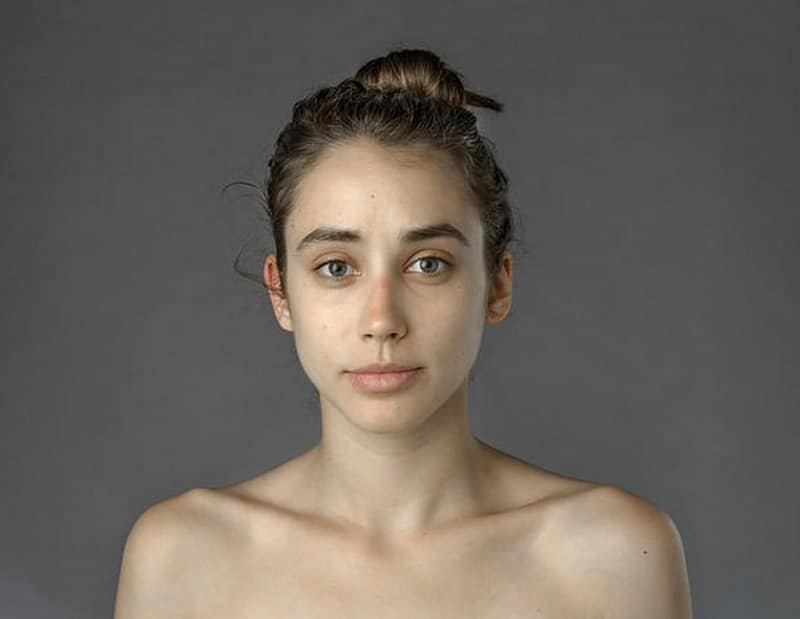
And below, a selection of 28 images that she received:
(It should be noted that each image doesn’t necessarily embody the ideal beauty image in respective country/culture. Rather, it gives an insight into the personal and cultural perceptions of beauty pertaining to the artist involved, and to a certain extent their editing skills.)
Argentina
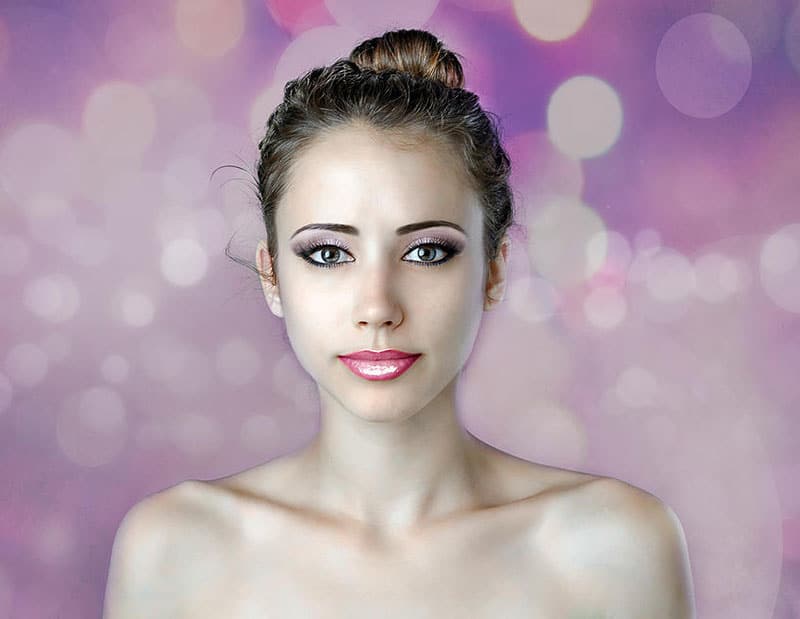
Australia
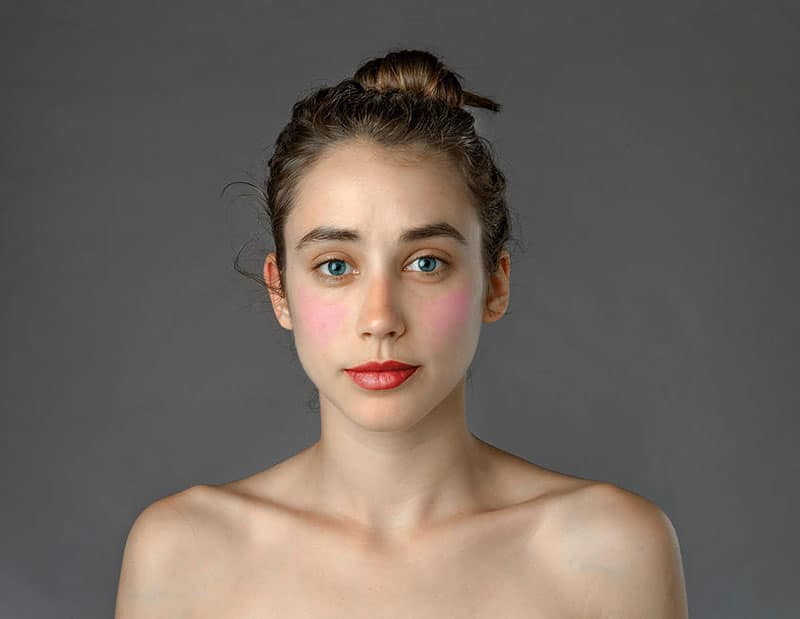
Going to the beach is a popular pastime in Australia, so the Australian beauty ideal tends to revolve around having a tan. Fake tanners are popular locally to darken one’s skin and get that “sun kissed” look.
Bangladesh
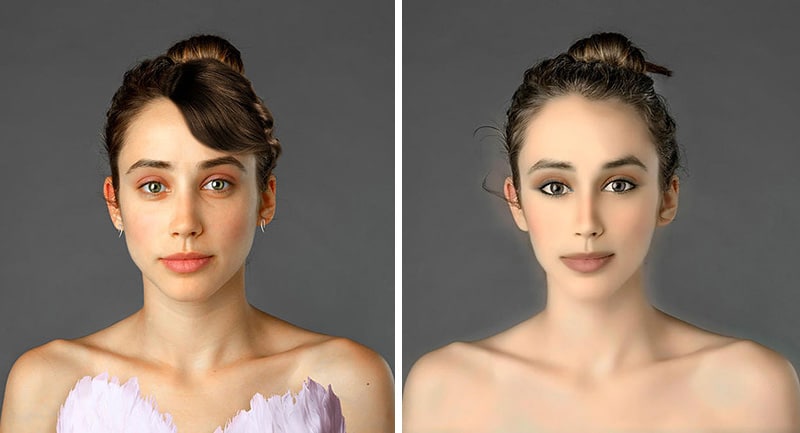
Bangladeshi PE reader Monisha shares about their local version of “ideal beauty”:
Fair skin (with a soft, golden hue), long hair, thin eyebrows (or as long as it is not thick and there is a curve, which is the look I see most women getting in saloons. The one you see in the top right image, there is a point/curve in the brow), big eyes, sharp nose, tall (5″ 5′ is above the average height for women in our country), and slim.
[On sharp nose] People tend to like sharp facial features. I think it is because we look towards India a lot. We watch a lot of Bollywood movies and Indians tend to have sharper noses than us, so I think that’s where this comes from.
She cites Bidya Sinha Saha Mim, a famous Bangladeshi actress and model, as a good example of this “ideal”:
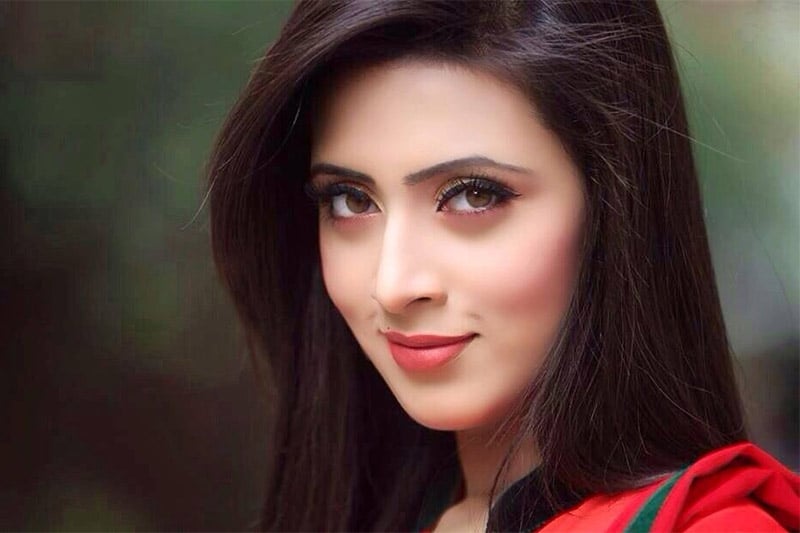
Bidya Sinha Saha Mim, a famous Bangladeshi actress and model
According to Monisha, the edited image of Esther on the top right is an exact match of the “ideal beauty” look in Bangladesh!
Bulgaria
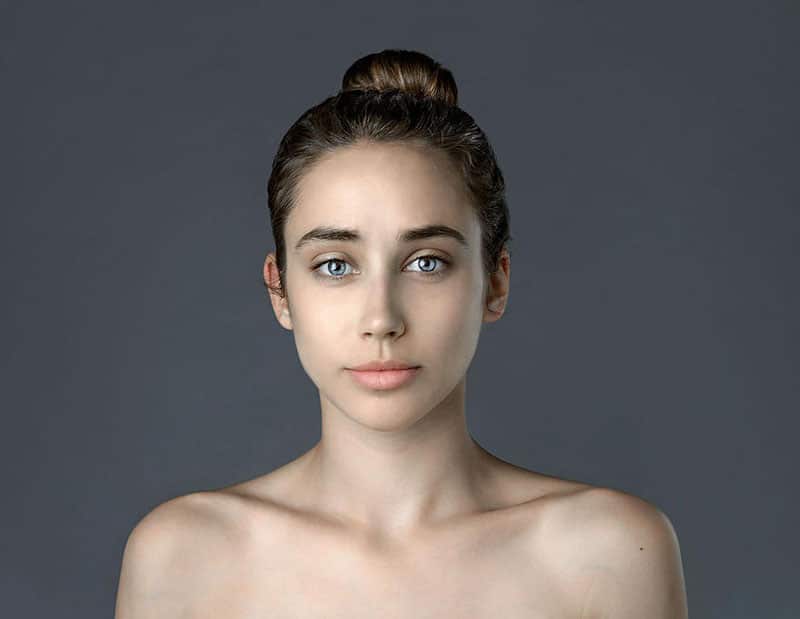
Chile
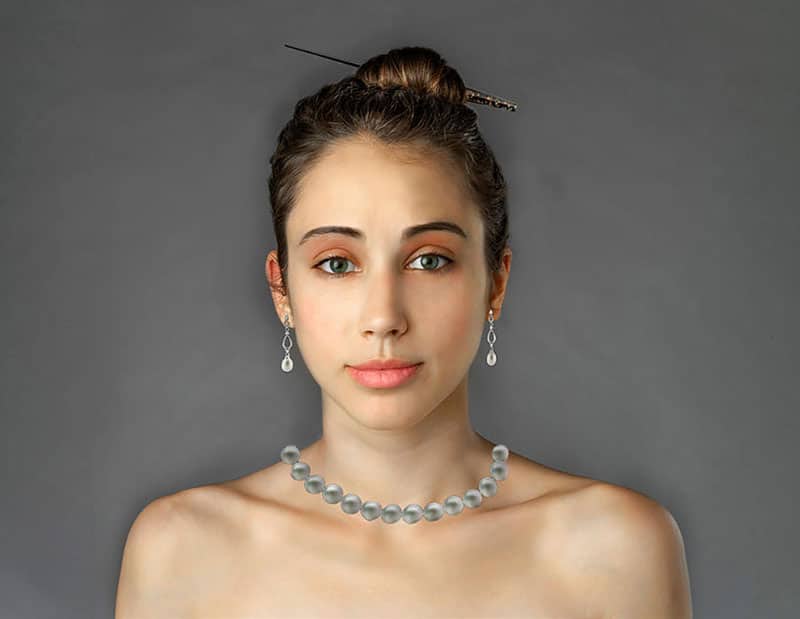
Germany
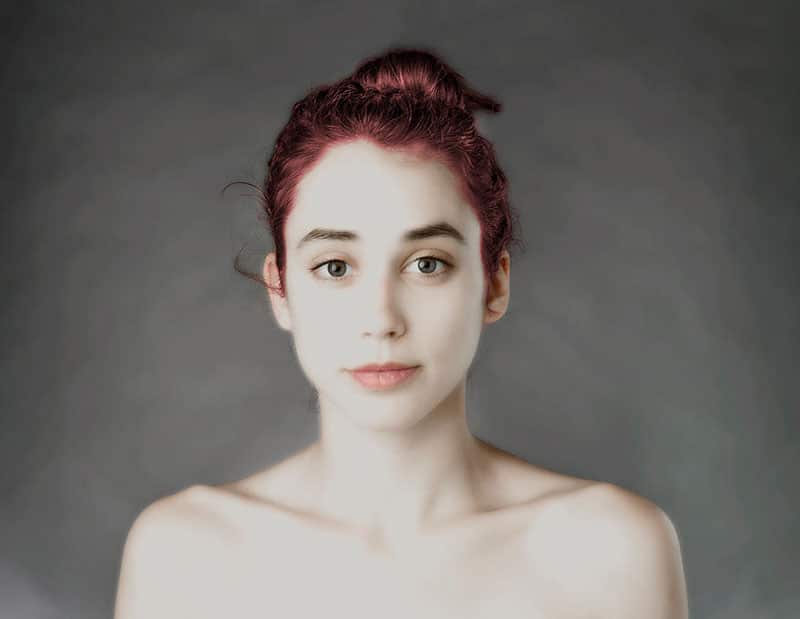
Germany’s artist chose to give Esther pale skin and auburn hair. According to this post (I believe it’s by a German), the makeup look in Germany is discreet:
Most German girls prefer to err on the side of too little rather than too much makeup. Makeup should look polished but natural.
The common makeup routine is a subtle layer of foundation, a touch of blush, lip gloss and eye shadow. And of course mascara, as German women love accentuating their eyes with mascara and kajal (Celes: this is an eye cosmetic used to contour and/or darken the eyelids and as mascara for the eyelashes). If German girls want to go crazy with their makeup, they will apply tons of mascara. Most eye makeup is done in neutral colors, even when it is very dark and intensive.
Greece
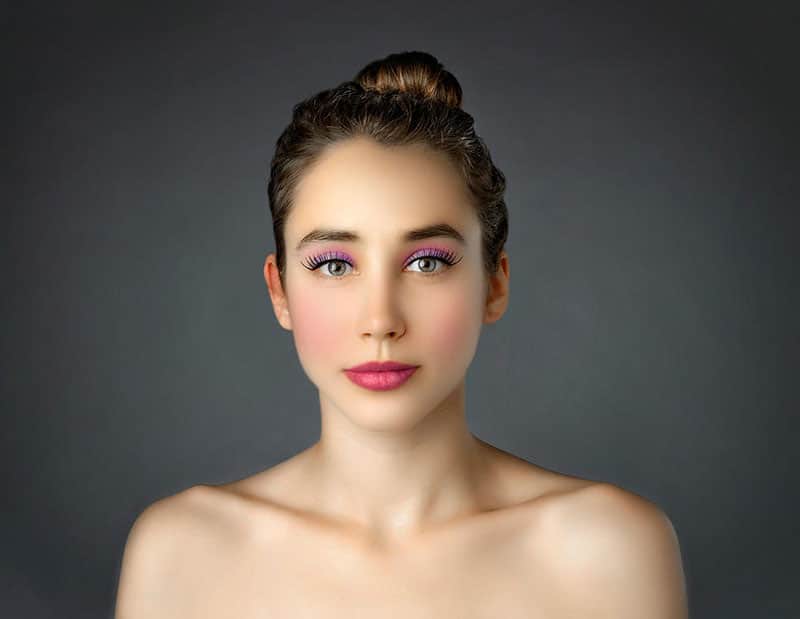
India
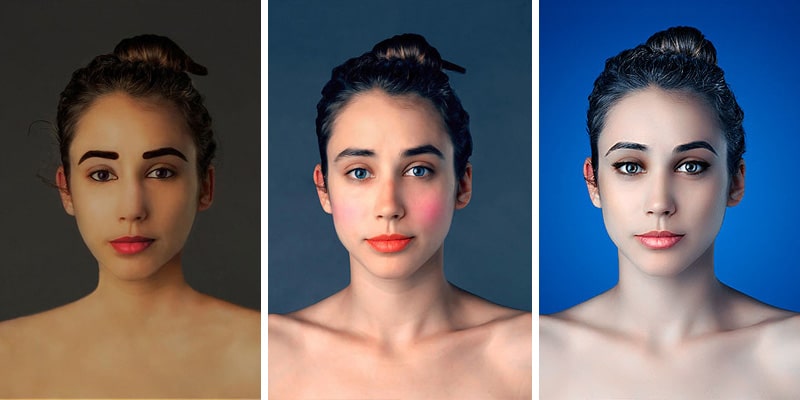
Notice how the brows were unanimously darkened by all the Indian artists? If you observe top Bollywood actresses (who would give some insight into the Indian ideal beauty standard), India’s beauty ideal seems to revolve around having long, lustrous, black hair; fair skin (perhaps a few shades lighter than normal Indian skin tone); large almond-shaped eyes; long, luscious lashes; dark eyebrows heavily lined with kajal; and a straight, pointed nose.
Top Indian actress Aishwarya Rai, commonly cited as “the most beautiful woman in the world,” is a good representation of this ideal:
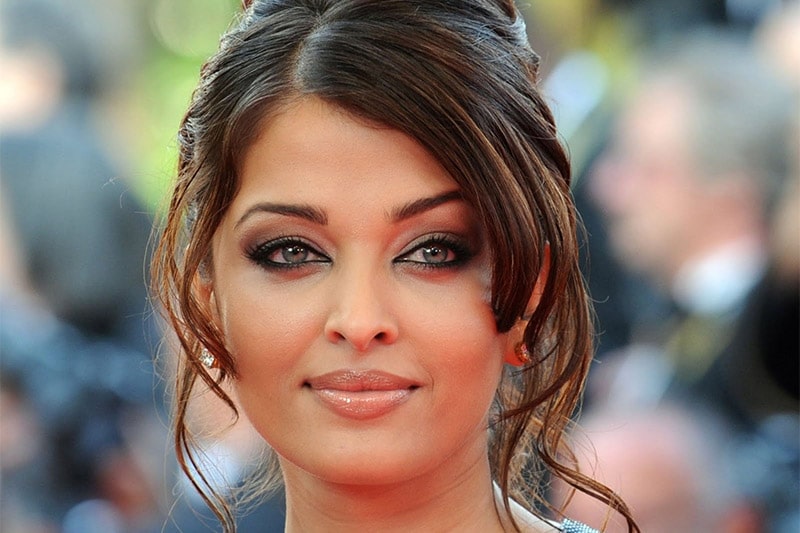
Indonesia
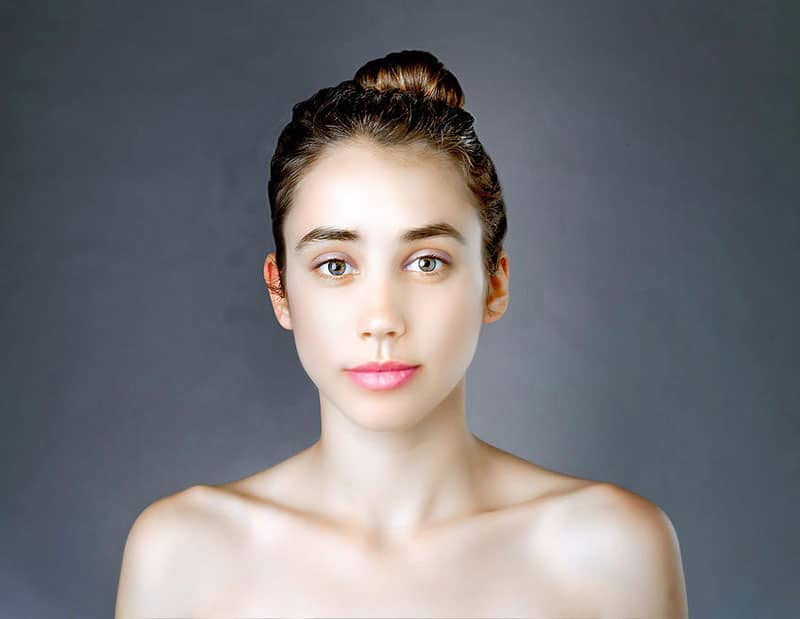
Indonesian PE reader Hilda shares that “ideal beauty” in Indonesia includes “having big eyes, fair complexion, fair skin, long [dark] hair, plump lips, a sharp nose, and a slim body with curves.”
“Syahrini” (Rini Fatimah Jaelani) is a popular Indonesian singer — and not surprisingly, she embodies these very features.
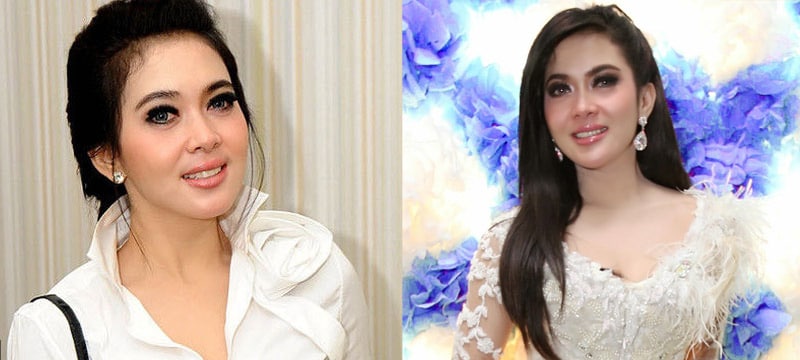
Well-known Indonesian singer Syahrini (Rini Fatimah Jaelani). She has 3.7 million followers on Instagram.
Dian Sastrowardoyo is another popular Indonesian actress (special thanks to Indo PE reader Aisa for suggesting :) ) who fits the same “ideal beauty” look:
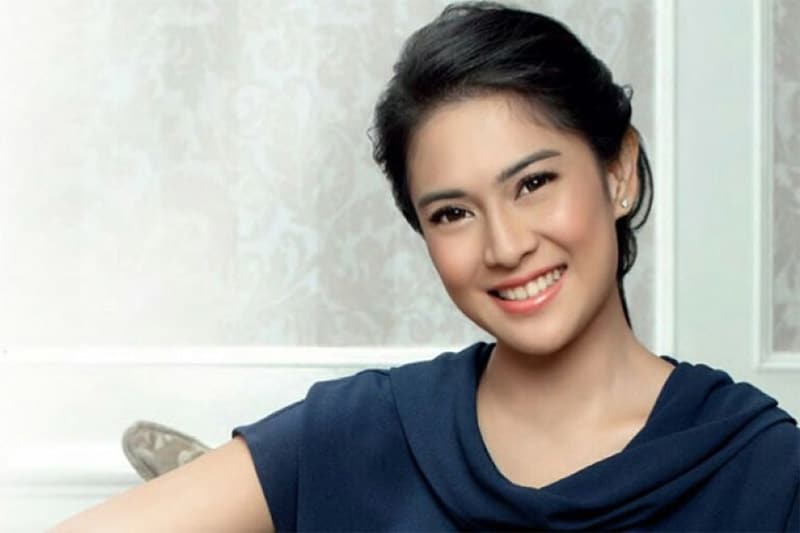
Dian Sastrowardoyo, an Indonesian actress
Isreal
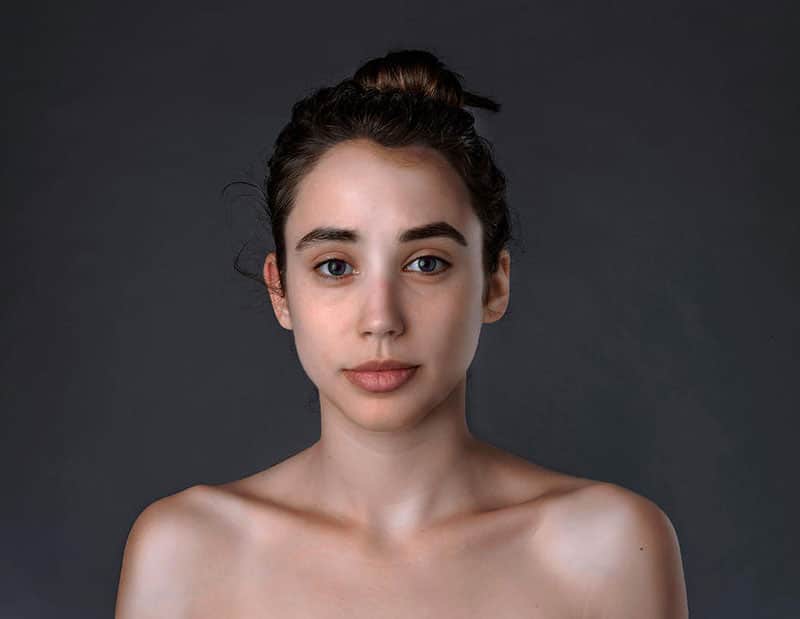
Italy
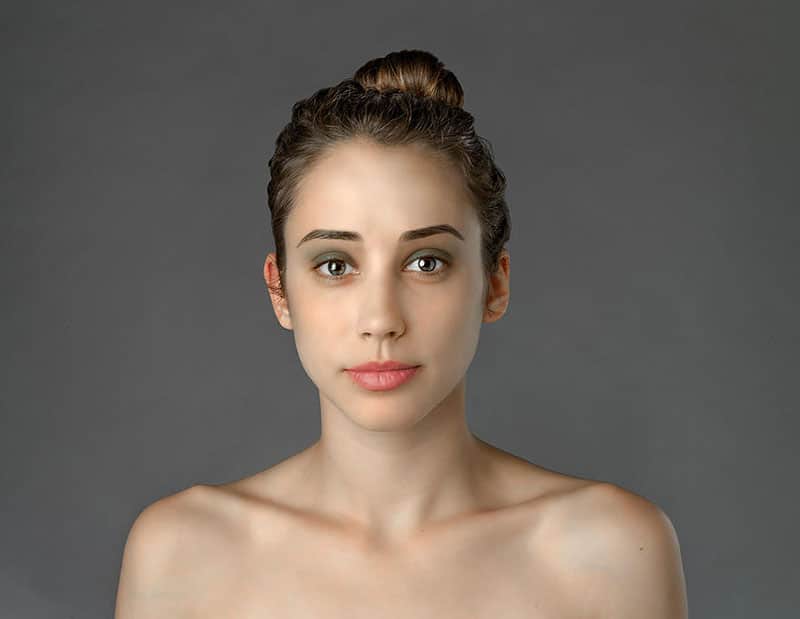
I did a Google search for “beautiful Italian celebrities” and the top 3 celebrities in this list are Monica Bellucci, Giusy Buscemi, and Claudia Romani. See any resemblance between their looks and the altered photo above?
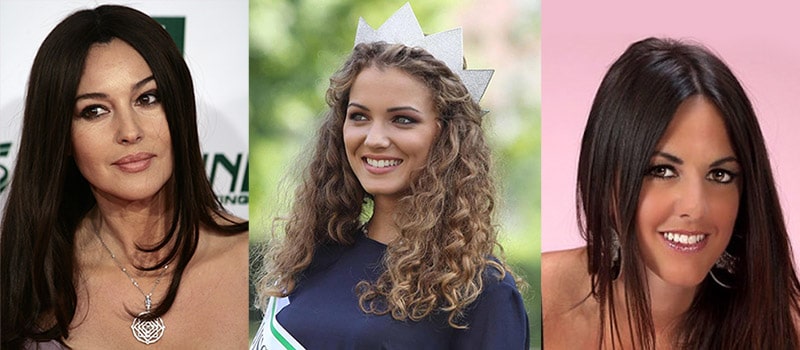
From left to right: Monica Bellucci, Giusy Buscemi, and Claudia Romani
Kenya

Kenyan PE reader Jason Wales says that in Kenya, “women who generally have big ‘assets,’ light complexion and long hair are prioritized as beautiful.”
Morocco
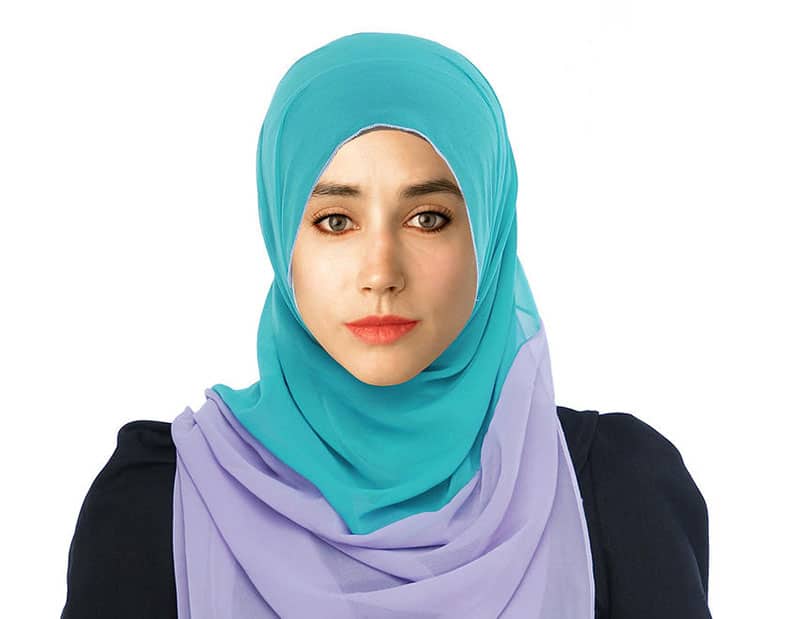
Interestingly, Morroco’s image has a cultural twist as the artist added a hijab of his own accord! Hijab, meaning “cover,” is a headscarf commonly worn by Muslim women as a symbol of modesty and privacy. The Quran (the religious text of Islam) admonishes Muslim women to dress modestly while most Islamic legal systems define this type of modest dressing as “covering everything except the face and hands in public.”
Morocco is an Islamic country with 99.9% of Moroccans being Muslims.
Pakistan
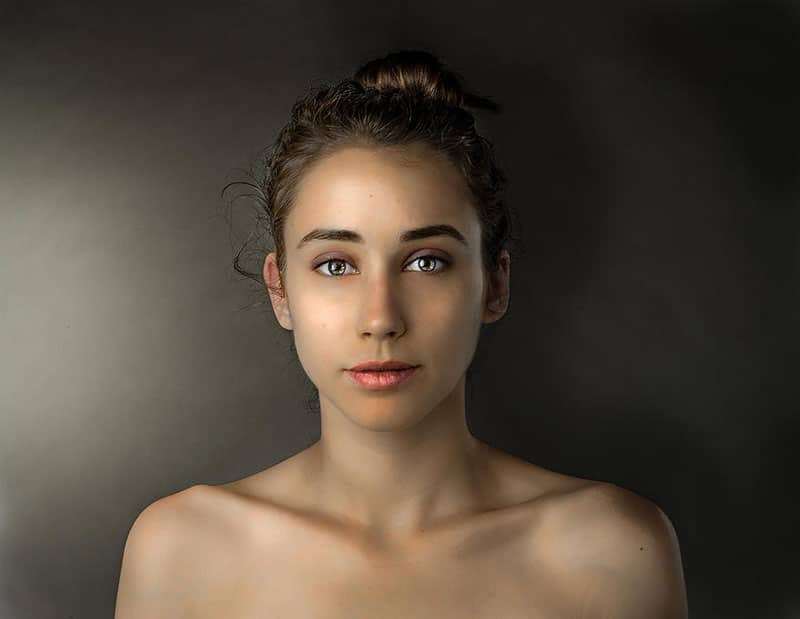
Pakistani PE reader Saba Alam shares that “ideal beauty” in Pakistan is “fair complexion, long and straight hair, big eyes, height of more than 5’3″, medium or small lips, healthy skin with no dark spots or wrinkles.”
The Philippines
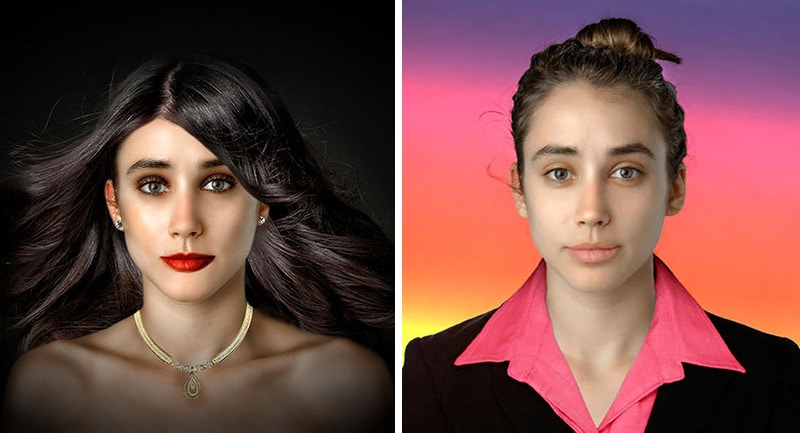
In researching on the “ideal beauty” in The Philippines, I came across this blog post with very interesting insights:
Filipinos have a mixed heritage that can be traced back to Malay, Korean, Chinese, and Spaniard origins, but the original inhabitants of the Philippines were dark skinned and had tight, curly hair and flat noses. Over the course of hundreds of years of colonization, the Filipinos began to associate power and dominance with people of lighter skin tones, with long straight hair and sharp, ridged noses. The word ‘Atis’ became a derogatory slur hurled by children in the schoolyard to describe someone [who] was ugly, dark, or to indicate a person [who] behaved in a primitive fashion.
Today, the average Filipino TV star, movie celebrity, music artist, and sometimes politicians are mestizo, meaning they’re of mixed parentage, with one parent being Filipino and one parent being a foreigner, usually a Caucasian. In the old days of Spanish colonial rule, these mestizos were placed on a higher social status, between pure Spaniards and pure Filipinos. That idea of being in a higher social caste based on mixed parentage [continues] today. ~ The Standard of Beauty in the Philippines
What’s interesting is how this perception that mestizos are of a higher social status (if it’s true) has carried over in terms of beauty standards. This has influenced the local consumer culture as there are products/services readily available to help one achieve the look of fairer skin, long straight hair, and sharp ridged noses: whitening products (soaps, creams, bath salts), hair straightening treatments like rebonding that leaves hair pencil straight, and nose jobs for the more affluent to get a more Caucasian-look.
The result? Filipinas who start looking the same. And interestingly, this can be observed in places like Korea and Japan, where there is a very narrowly defined ideal for beauty (big eyes with double eyelids, very fair skin, small face, V-line jaw, small and sharp nose, perky lips (mediums size), and long luscious hair, usually in big waves). To a certain extent, this ideal is true in Singapore too (especially among the Chinese) and many local Chinese females strive to achieve this look (through consumer products or even cosmetic enhancements), to an extent where many of the socialites, celebrities, and fashionistas look almost similar.
Romania
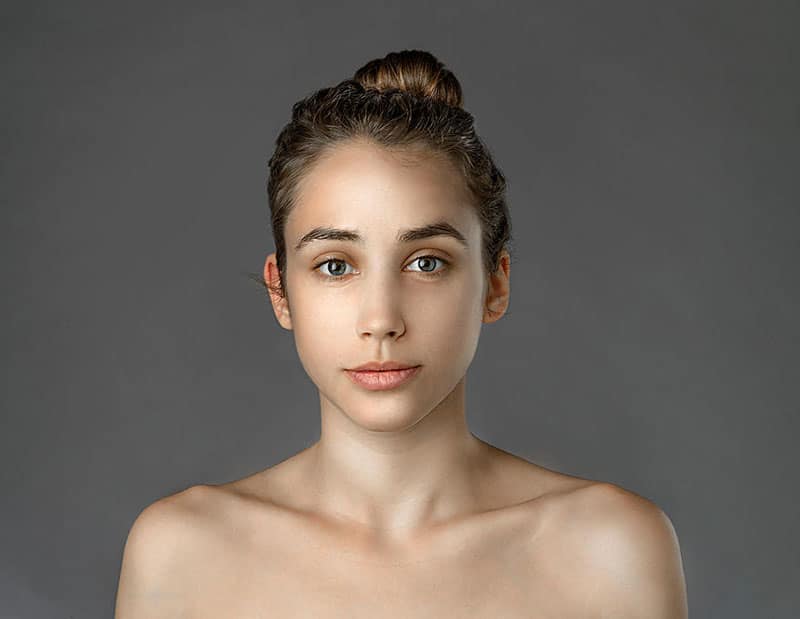
Romanian PE reader Lina shares that “ideal beauty” in Romania is “the nicely proportioned body [that is] slim and slightly athletic at the same time (without visible muscles though or you’re considered a “she-male”); clear skin; shiny hair (preferably long, although this has changed a bit lately); big eyes; full and nicely curved lips.” How do you think this compares with the above photo?
Serbia
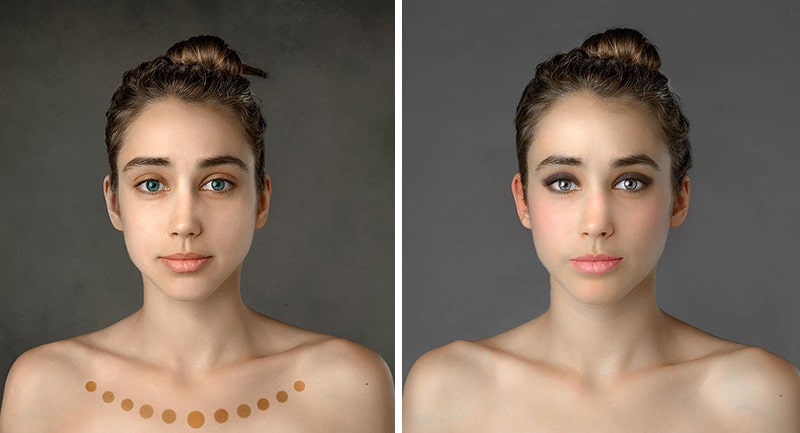
For Serbia, the alterations included a slightly thinner nose and darker brows. I’m not sure if the circle markings on the left are random or have some cultural meaning.
Sri Lanka
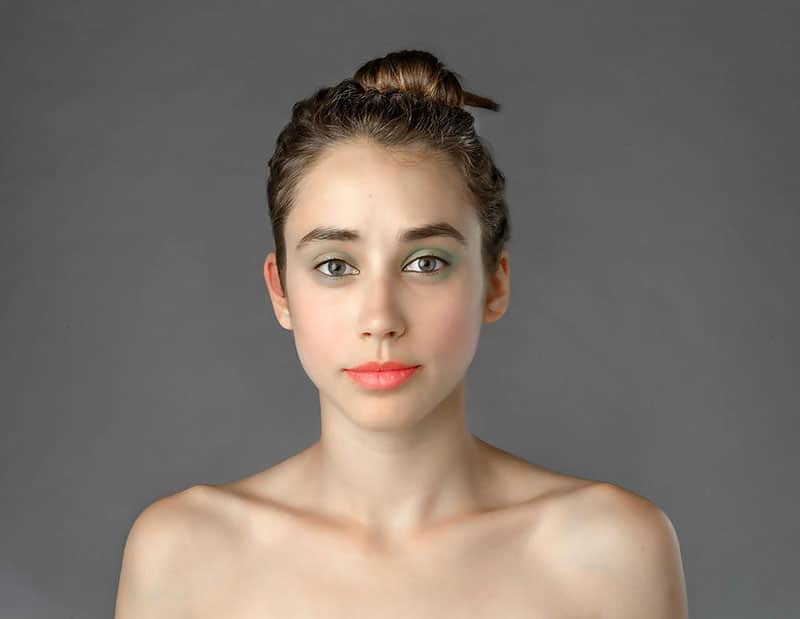
Ukraine
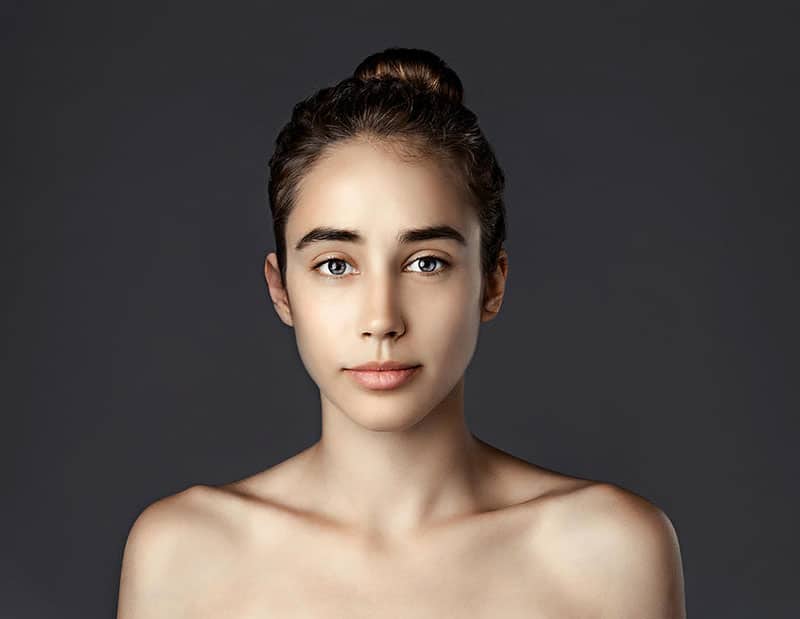
I googled “most beautiful Ukrainian women” and came across this post that lists Ani Lorak, Anna Bessonova, and Chantal Kreviazuk as among the most beautiful Ukrainian women. Here are their pictures:
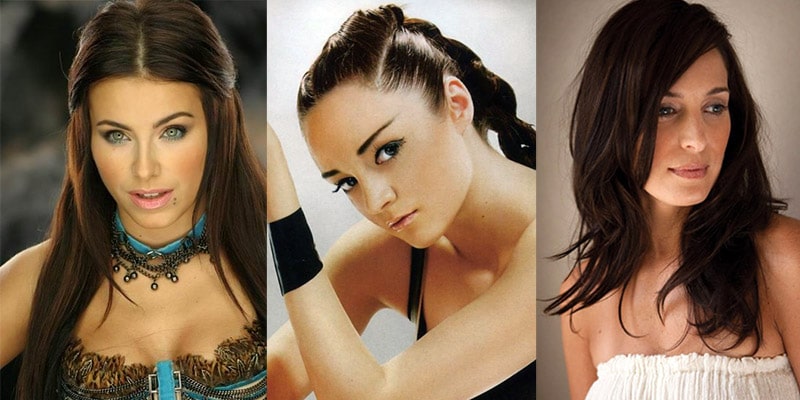
From left to right: Ani Lorak, Anna Bessonova, and Chantal Kreviazuk
How do you think the edited photo compares with their looks?
United Kingdom
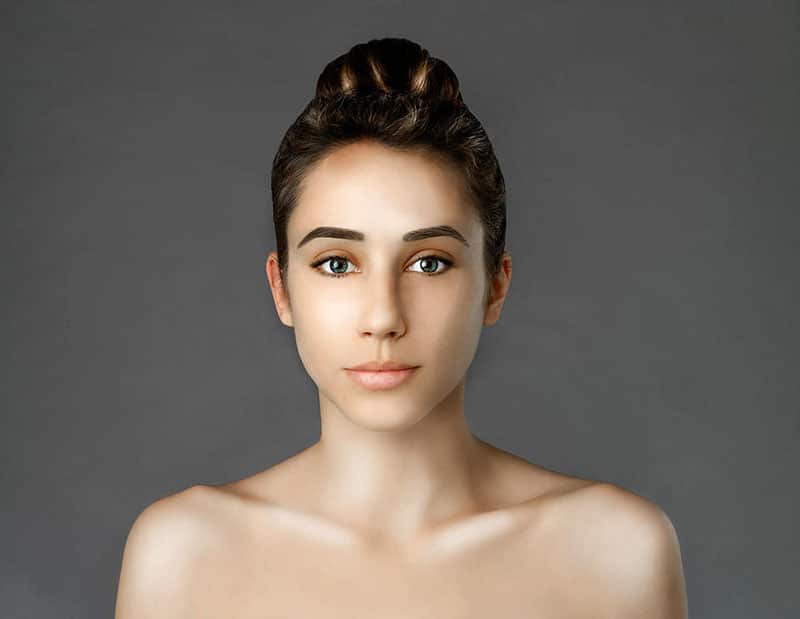
Do you know that the average British woman spends up to £40,000 on her hair and £100,000 on cosmetics in a lifetime? To put this into context, according to The Independent, for around the same amount you could buy two Mini Coopers or a modern apartment in Bradford. All in all, the UK beauty industry is a booming business with women spending approximately £300 billion per year to look their best.
I won’t be surprised if the beauty spending per capita is even higher in Singapore, Japan, or Korea (adjusted for currency and cost of living etc.). The beauty industry is huge in Asia and cosmetic treatments (botox, fillers, and even surgery) are becoming more commonplace than ever.
United States
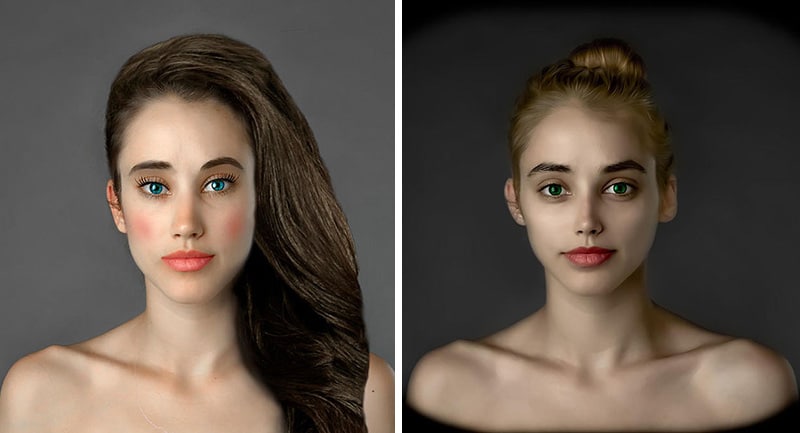
I thought the US images were funny as they look nowhere like the original. Honestly though, I thought the photo on the left could have been a vague attempt to create Angelina Jolie’s look (the green eyes, full lips, full lashes, hairstyle, and taller nose). Perhaps a projection by the artist?
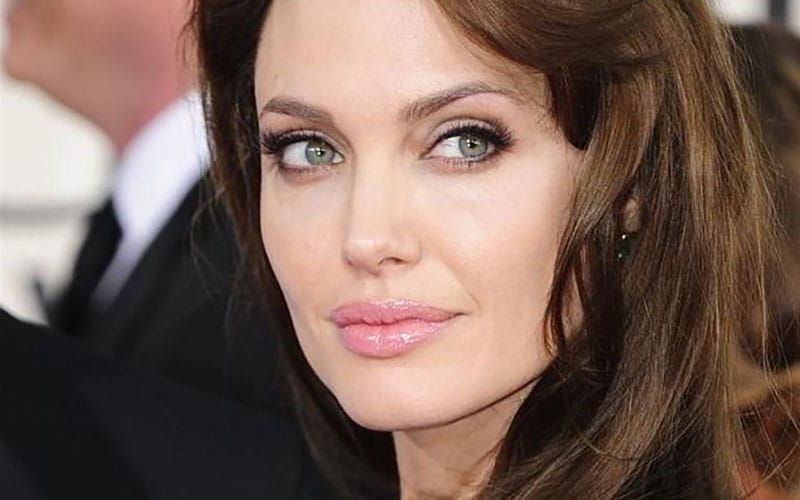
Angelina Jolie
Venezuela
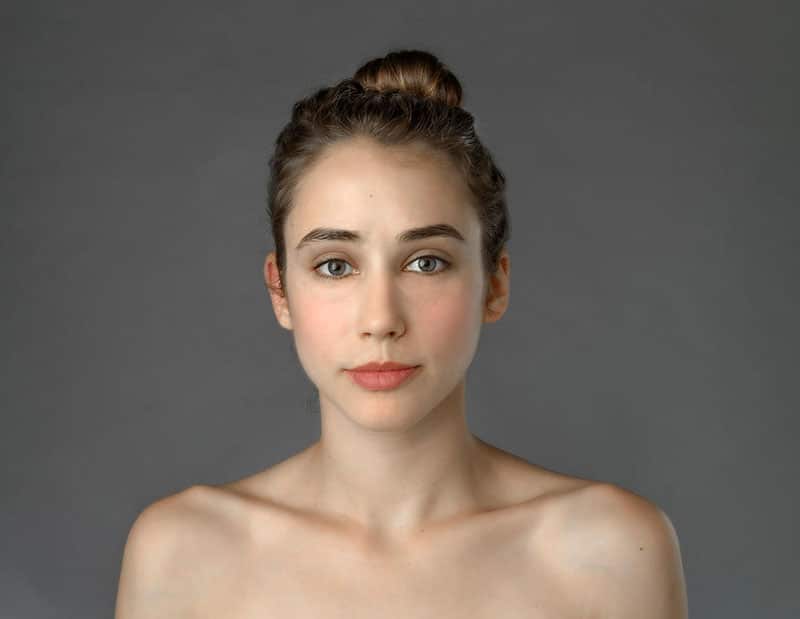
Vietnam

My Thoughts
There weren’t any images for countries like Singapore, Hong Kong, Taiwan, China, Korea, and Japan. My guess is that Esther didn’t commission artists from these countries. It would be interesting if she did, though the results would probably be predictable — basically matching the ideal I mentioned above, such as big eyes with double eyelids, very fair skin, small face, V-line jaw, small and sharp nose, perky lips (mediums size), and long luscious hair, usually in big waves. Something like the below:
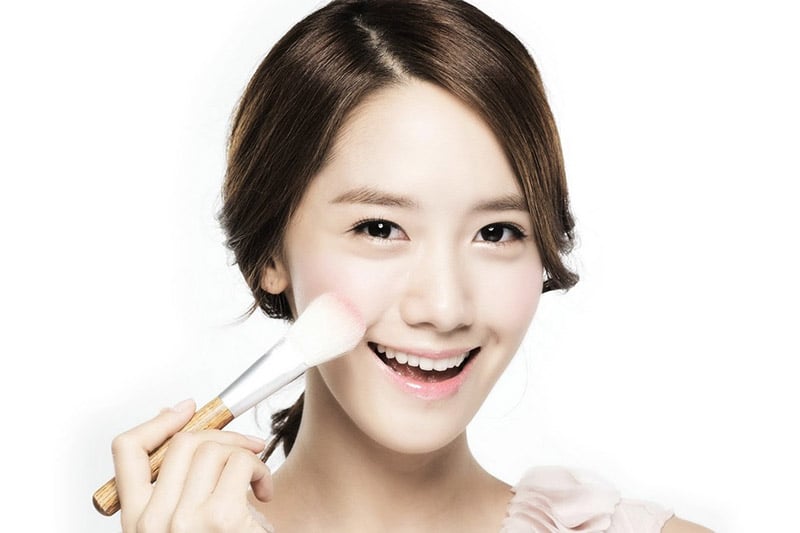
Im Yoona, a South Korean singer and actress and member of South Korean girl group Girls’ Generation. This is a general example of the beauty ideal in Singapore, Hong Kong, Taiwan, China, Korea, and Japan (with nuances across each country of course).
What I found consistent across all the photo edits is that (1) the complexion was made clear and spotless in each image and (2) eye bags and lines were generally reduced or completely removed. This is consistent with the societal stereotype that having spots, bags, and/or lines aren’t considered beautiful, partly because they are signs of ageing, partly because they suggest skin that isn’t “flawless.” And then on an image-by-image basis, you can see the personal and cultural takes on beauty specific to the artist.
What this experiment proves, as we already know, is that there is no single definition of beauty. Perhaps you may strive to achieve an “ideal” beauty look, but this ideal is no more than a cultural and societal construct, one that was conditioned in you since young and continues to be conditioned in you by way of your environment.
Sure, perhaps there is a certain “ideal beauty” look within a culture/country. Sure, perhaps within all the countries, there is a general consensus that skin that isn’t spotless or skin that has bags/lines/etc. isn’t considered beautiful. But these are all results of conditioning. Conditioning by media, conditioning by society, conditioning by what marketers want you to believe. To be honest, I don’t think people are deliberately being malicious or manipulative when they keep touting only one or two looks as beautiful; rather, I’d say it’s an overall societal “disease,” a clouded veil that everyone is under that is making them perceive only one look or a series of looks as beautiful.
The fact is that you are already beautiful as yourself. That you, as yourself today, with the face and body you have (all your facial features, your skin “imperfections” (whatever they are), and your body shape and size), are already beautiful. Not more or less beautiful than others, but beautiful in itself. That’s because beauty is a formless quality that exists in all of us, that isn’t defined by an exact look, shape, size, color, or age. There aren’t just 1, 10, 100, or 1,000 looks of beauty in a country or in the world — ALL of us here are beautiful. Not just “okay” or “normal” beautiful, but truly beautiful, as ourselves, just like any other person. That someone would think otherwise is because they have been conditioned to believe otherwise, but when you recognize that true beauty is something that doesn’t come boxed in one particular look, that transcends beyond media definitions, you can finally begin to embrace the beauty that’s been in you all along. ♥
You are beautiful as yourself, no alterations or “enhancements” needed. While you can try to supposedly “improve” your physical beauty according to your vision, know that this is entirely unnecessary and you’re only doing so because you somehow think that mental image is more beautiful than who you are now (when it isn’t true). The fact is that you are already beautiful as yourself — not more or less beautiful than others, but simply 100% beautiful. Period. ♥
For more on the above, read:
- The Beauty of Self – Why I Used To Feel Inferior about My Looks and Why I No Longer Feel That Way
- Affirmation Challenge Day 8 [Physical Looks]: “I’m beautiful, just the way I am.”
(Images: Esther Honig)

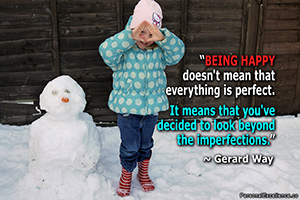
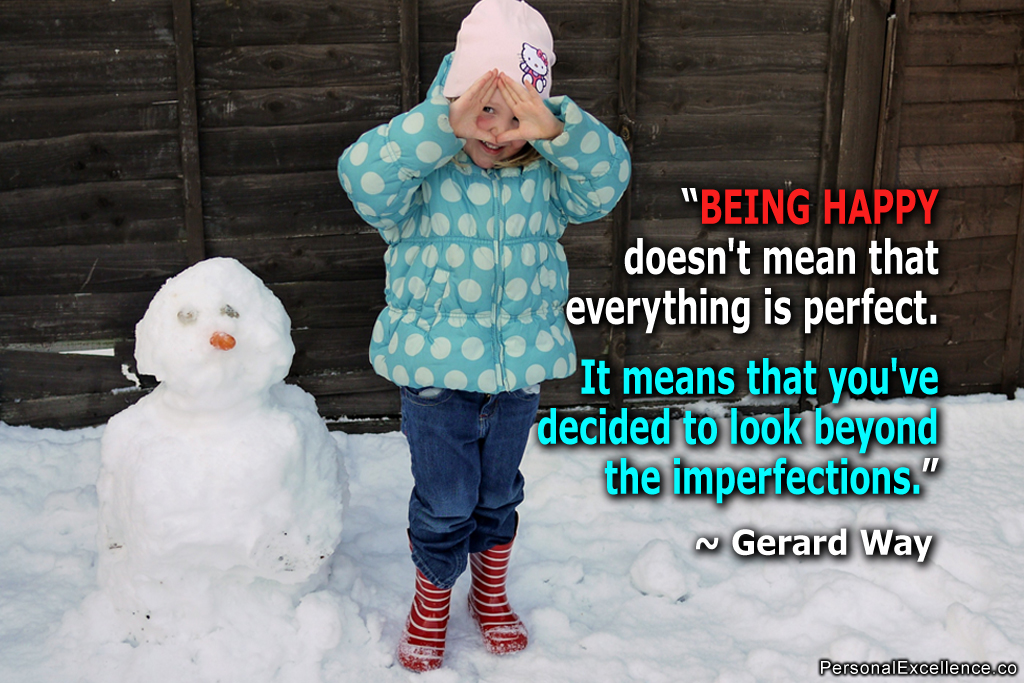
![Lost in Life? [Infographic]](https://personalexcellence.co/files/infographic-lost-in-life-400x402.jpg)



 I hope you find my content helpful. Join my community of 65,000 readers and get my latest articles delivered to your inbox. Your email is safe and I never send spam.
I hope you find my content helpful. Join my community of 65,000 readers and get my latest articles delivered to your inbox. Your email is safe and I never send spam.
Commenting for this post is closed.